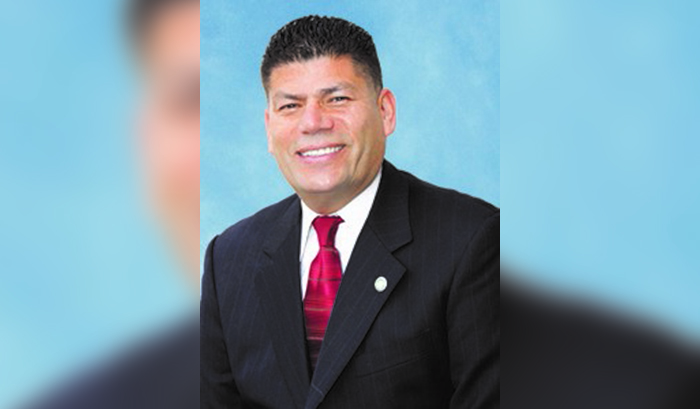Los Angeles remains one of the least affordable residential markets in the country, creating a housing affordability gap that, if left unabated, threatens to hamper efforts for an economic rebound in 2011 and 2012, according to findings released by the Los Angeles Business Council at its Mayoral Sustainable Housing and Transportation Summit held yesterday at the UCLA Anderson School of Management.
The Business Council announced its support of several policy initiatives that, together, can bridge the affordability gap while investing in the region’s public transportation system, creating green jobs and building a meaningful amount of sustainable energy capacity. Specifically, the Business Council endorses Mayor Villaraigosa’s 30/10 plan, which will facilitate the completion of 12 essential voter-approved transportation infrastructure projects in 10 years instead of 30. The Business Council also supports incentives for private sector developers to build workforce housing units along transportation corridors in the region.
Seeing the Wisdom of 23
The organization was one of only two business groups in Los Angeles to fight for the defeat of Prop. 23, which would have delayed implementation of California’s landmark climate change law, AB 32. And the organization endorsed Prop. 22, which will protect local redevelopment agency funds, much of which will be used for affordable housing.
“Implementing the Mayor’s 30/10 plan,” said Business Council President Mary Leslie, “will result in the creation of tens of thousands of jobs. It will also create unprecedented opportunities to build residential workforce housing along transportation corridors, including Wilshire Boulevard from downtown to the Westside.
“We’re on the cusp of having this approved in Washington, and Sen. (Barbara) Boxer’s leadership will be critical to securing this pivotal investment in our region’s transportation system.”
Here is the Crucial Part
Investing in a public transportation system that works is a core component to addressing the jobs/housing imbalance in Southern California, according to local experts.
“Meaningful public transit investment, planning and connectivity are critical to solving the workforce housing crisis in the region,” said Richard Katz, Metro Director. “Residents need the option of getting out of their cars and bypassing the region’s increasingly congested streets and highways. That’s a primary reason Mayor Villaraigosa’s 30/10 plan is so important to achieve. We need the relief now.”
Thomas Ricci, Executive Vice President of the Thomas Properties Group, touted investment in public transit as a way to open new opportunities for transit-oriented development. “When you consider the need for housing,” he said, “the onset of multi-billion-dollar investments in new public transit and the incentives to build housing along public transit corridors, you can begin to see an unprecedented opportunity to address the region’s housing, transportation and environmental priorities in a comprehensive way.
“The stars are aligning. We need to take advantage of the opportunity now.”
“Transit-oriented development is highly prized by investors,” said Johanna Gullick, Southern California Market Manager of Community Development Finance at Union Bank. “It’s good business. And it fits nicely into an increasingly sophisticated market that incentivizes the incorporation of sustainability measures into new development.”
For example, the Los Angeles Community Redevelopment Agency provides credit for complex transactions with sustainable elements.
Passage of Prop. 22 two weeks ago is expected to stimulate new affordable housing development in redevelopment areas throughout the city. “The raid by the state in the last budget cycle was a serious blow to redevelopment agencies,” said David Grunwald, President/CEO of Affordable Living for the Aging, who also teaches redevelopment at USC. Approval of 22 “protects these funds going forward.”
Subsidies provided by redevelopment agencies to affordable housing developers are critical to getting affordable housing built. Business Council officials expect more affordable housing as a direct result of 22.
In his keynote address, Mayor Villaraigosa said the affordable housing goals he set at the Business Council summit two years ago has been met. “I’m proud to announce we have surpassed our goals of units financed for permanent supportive housing and affordable housing,” he said. “This will continue to be a central focus of my administration. We still have a lot of work to do to ensure that every Angeleno has access to affordable quality housing.”
Council leaders said Los Angeles has the opportunity to bridge the housing affordability gap and be a model for sustainable development.
State Senate President pro tem Darrell Steinberg (D-Sacramento), who authored SB 375 that provides new incentives for compact growth, told the summit that California needs a fundamentally different growth strategy to make housing more affordable in large employment centers like Los Angeles. “The traffic, pollution and global warming associated with sprawled development are no longer costs we can bear,” he said. “Los Angeles is already a leader in sustainability,” said Chris Essel, CEO of the Community Redevelopment Agency. “But there’s so much more that can and will be accomplished in this area. The public sector is providing incentives in an attempt to move markets toward sustainability.”
To that end, the Business Councl is sponsoring a research study by leading academics at UCLA and USC that will examine the region’s ability to generate solar power on multi-family housing units, creating a source of clean energy and enabling residents to lower their utility bills. The authors of that study offered a preview of their research at the summit – finding tremendous potential for rooftop solar on apartment buildings and condominiums. They are expected to release the full study early next year.
Ms. Leslie of the Business Council said the study has the potential to bridge several important issues. “We believe this research will explore a new synergy between the existing challenge of reducing or controlling the cost of workforce housing and the new potential benefits of meeting our renewable goals,” she said. “Given the abundance of multi-family units in Los Angeles, a well-designed rooftop solar policy can benefit both owners and tenants. It also would provide clean energy for all Angelenos and spur significant job-creation in the emerging clean-tech sector.”
Speaking of both the research study and the broader challenges encompassed by the summit, Ms. Leslie highlighted the need for a wide range of stakeholders to work together. “Now more than ever, we need creative solutions and partnership between the public and private sectors,” she said. “Los Angeles has a tremendous need and a great opportunity to reshape itself for years to come.”
About the Los Angeles Business Council
[img]999|left|||no_popup[/img]The Council is an advocacy and educational organization dedicated to serving local businesses while informing and impacting positive change at multiple layers of government. For more than 70 years, the Council has been a link between business and government, and it has sought to impact public policy related to education, housing and environmental sustainability.
The authors may be contacted at steve@sugermangroup.com and Jason@sugermangroup.com






